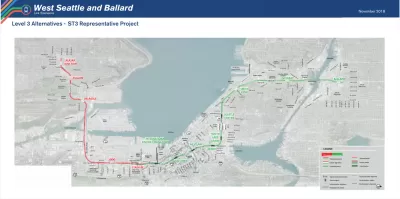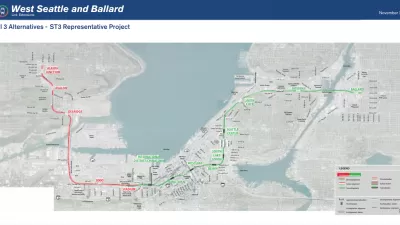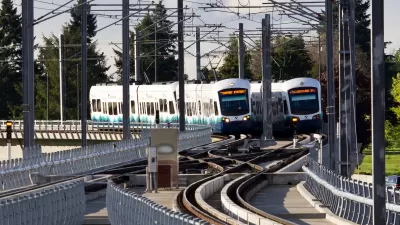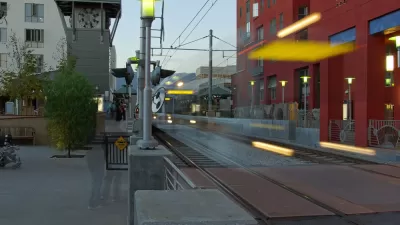The Seattle area's $53.8 billion transit expansion plan is moving along in fits and starts.

It’s been six years since Seattle-area voters approved a suite of taxes and fees to raise $27.7 billion for transit funding. While the Sound Transit 3 (ST3) plan has made some progress in that time, locals also point to examples of slow, even potentially abandoned plans for transit improvements originally envisioned as part of the region’s transit expansion.
Mike Lindblom updates the plan’s progress for the Seattle Times, examining some of the good (e.g., announcing preferred locations for three stations and a short tunnel in West Seattle for the Ballard Link extension) and the bad (e.g., a hub station planned for the Chinatown International District) when it comes to implementing the vision laid out by ST3.
The source article, below, includes status updates on ST3 plans for West Seattle, Sodo Station, the Chinatown International District, Seattle Center, and Ballard Crossing.
FULL STORY: Sound Transit 3: Progress in West Seattle, paralysis in Chinatown International District

Study: Maui’s Plan to Convert Vacation Rentals to Long-Term Housing Could Cause Nearly $1 Billion Economic Loss
The plan would reduce visitor accommodation by 25,% resulting in 1,900 jobs lost.

North Texas Transit Leaders Tout Benefits of TOD for Growing Region
At a summit focused on transit-oriented development, policymakers discussed how North Texas’ expanded light rail system can serve as a tool for economic growth.

Why Should We Subsidize Public Transportation?
Many public transit agencies face financial stress due to rising costs, declining fare revenue, and declining subsidies. Transit advocates must provide a strong business case for increasing public transit funding.

How to Make US Trains Faster
Changes to boarding platforms and a switch to electric trains could improve U.S. passenger rail service without the added cost of high-speed rail.

Columbia’s Revitalized ‘Loop’ Is a Hub for Local Entrepreneurs
A focus on small businesses is helping a commercial corridor in Columbia, Missouri thrive.

Invasive Insect Threatens Minnesota’s Ash Forests
The Emerald Ash Borer is a rapidly spreading invasive pest threatening Minnesota’s ash trees, and homeowners are encouraged to plant diverse replacement species, avoid moving ash firewood, and monitor for signs of infestation.
Urban Design for Planners 1: Software Tools
This six-course series explores essential urban design concepts using open source software and equips planners with the tools they need to participate fully in the urban design process.
Planning for Universal Design
Learn the tools for implementing Universal Design in planning regulations.
City of Santa Clarita
Ascent Environmental
Institute for Housing and Urban Development Studies (IHS)
City of Grandview
Harvard GSD Executive Education
Toledo-Lucas County Plan Commissions
Salt Lake City
NYU Wagner Graduate School of Public Service





























